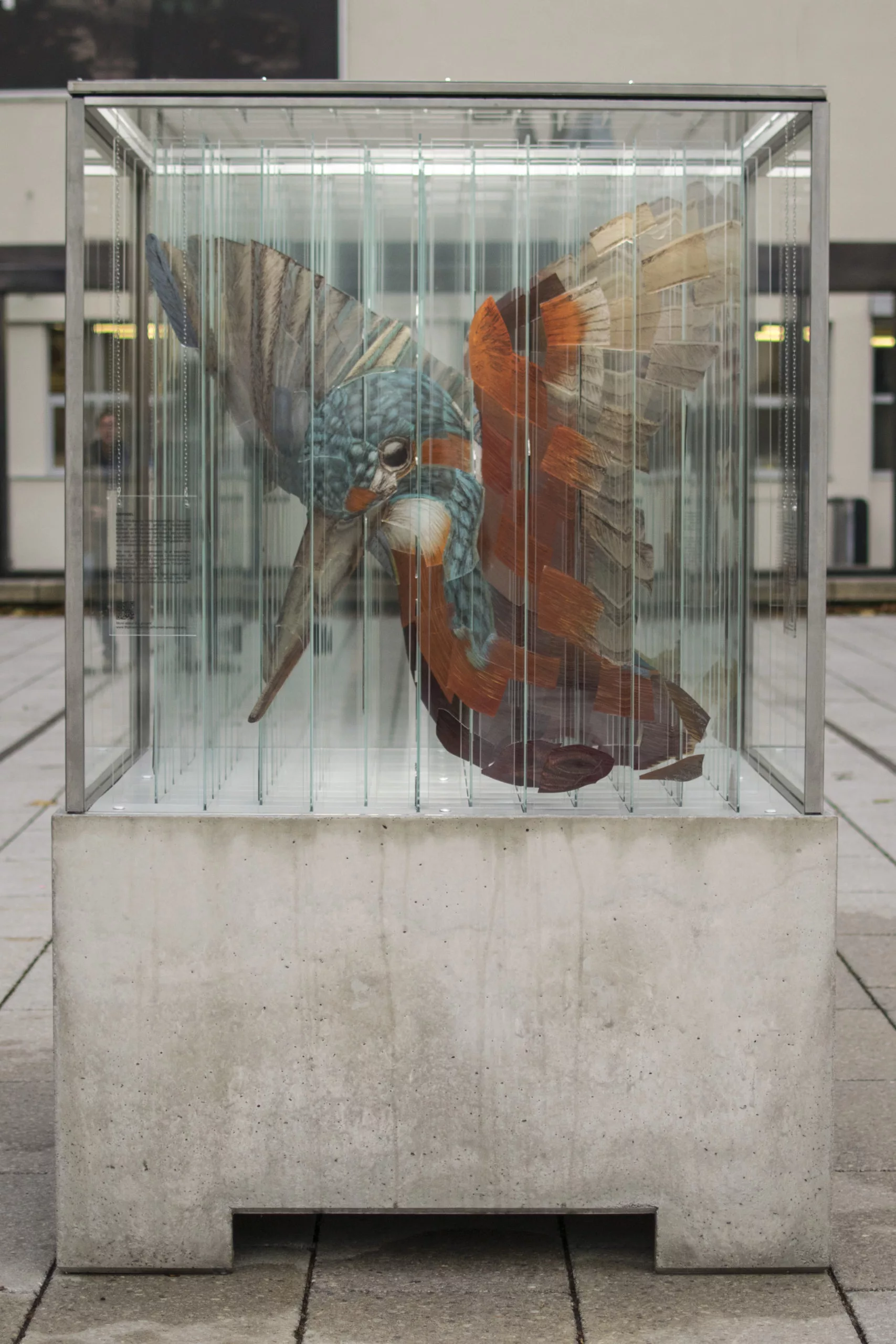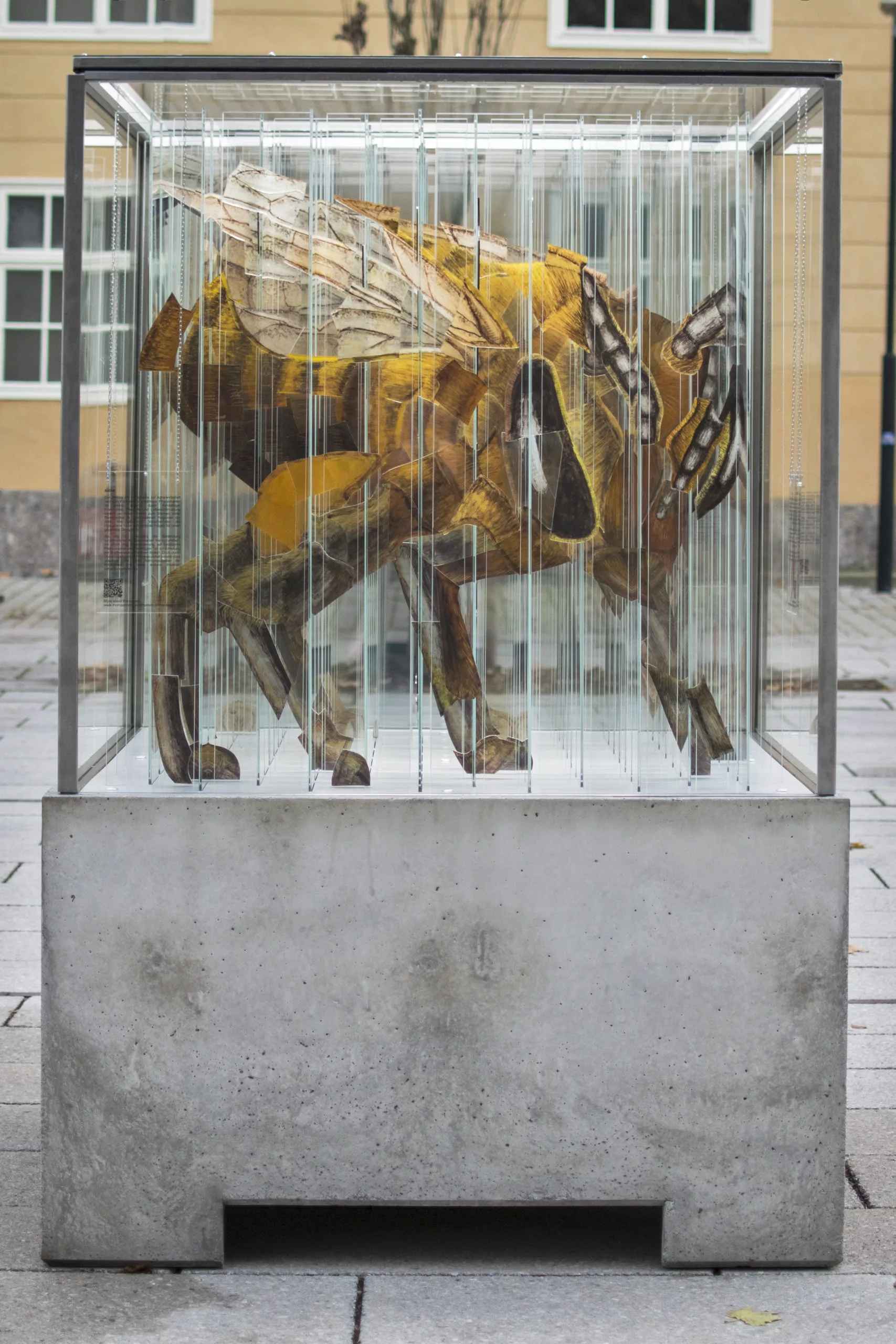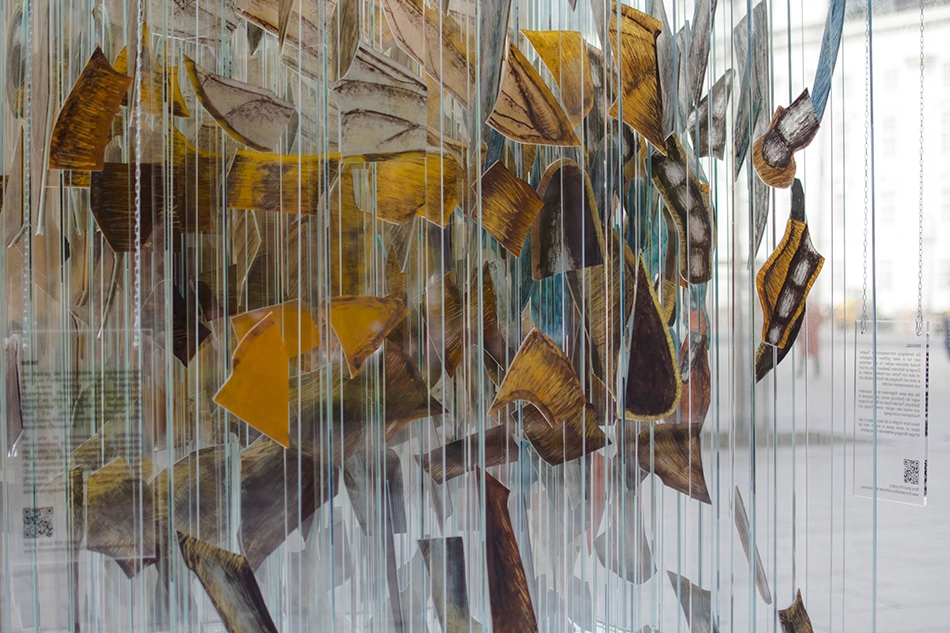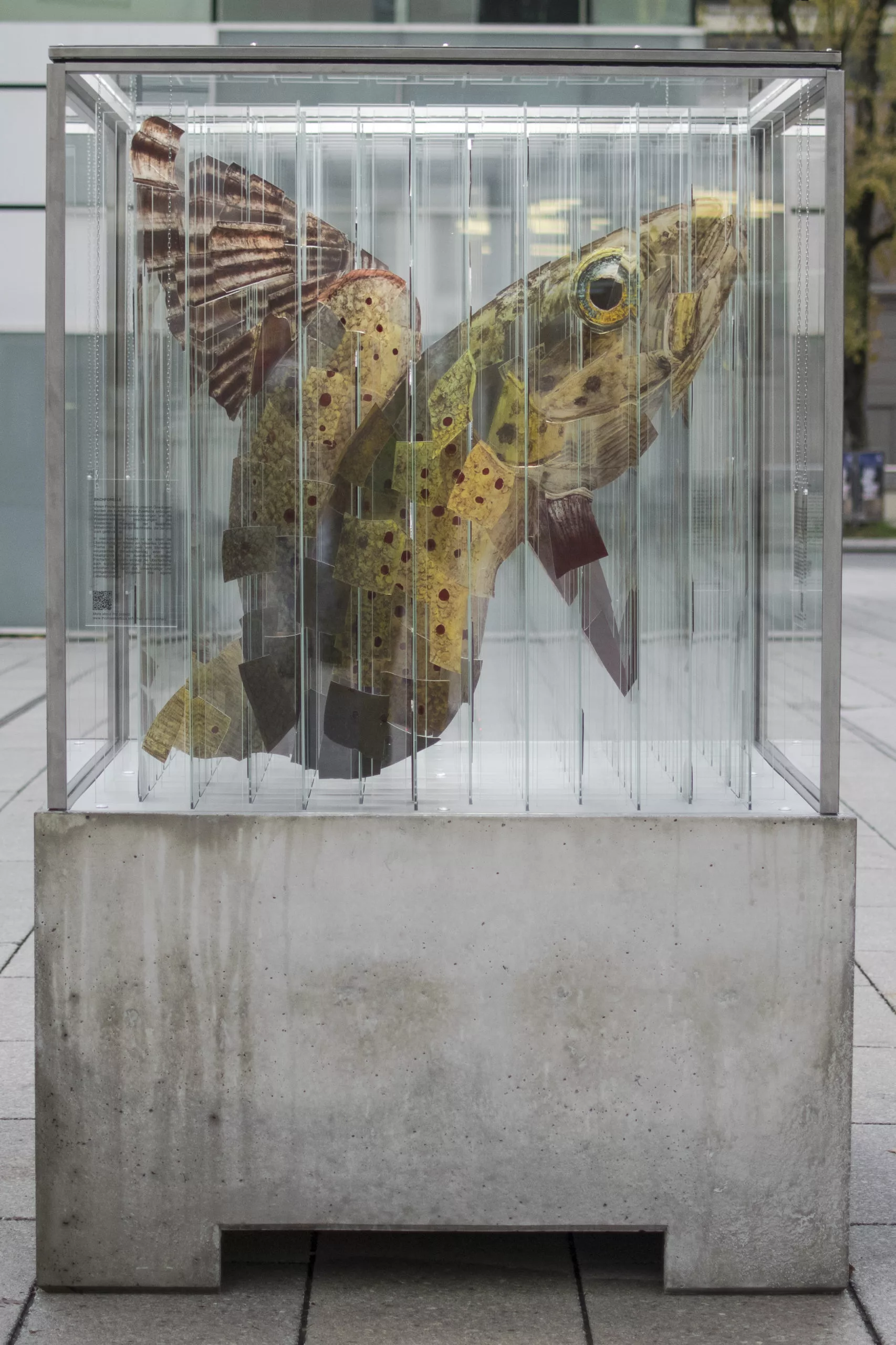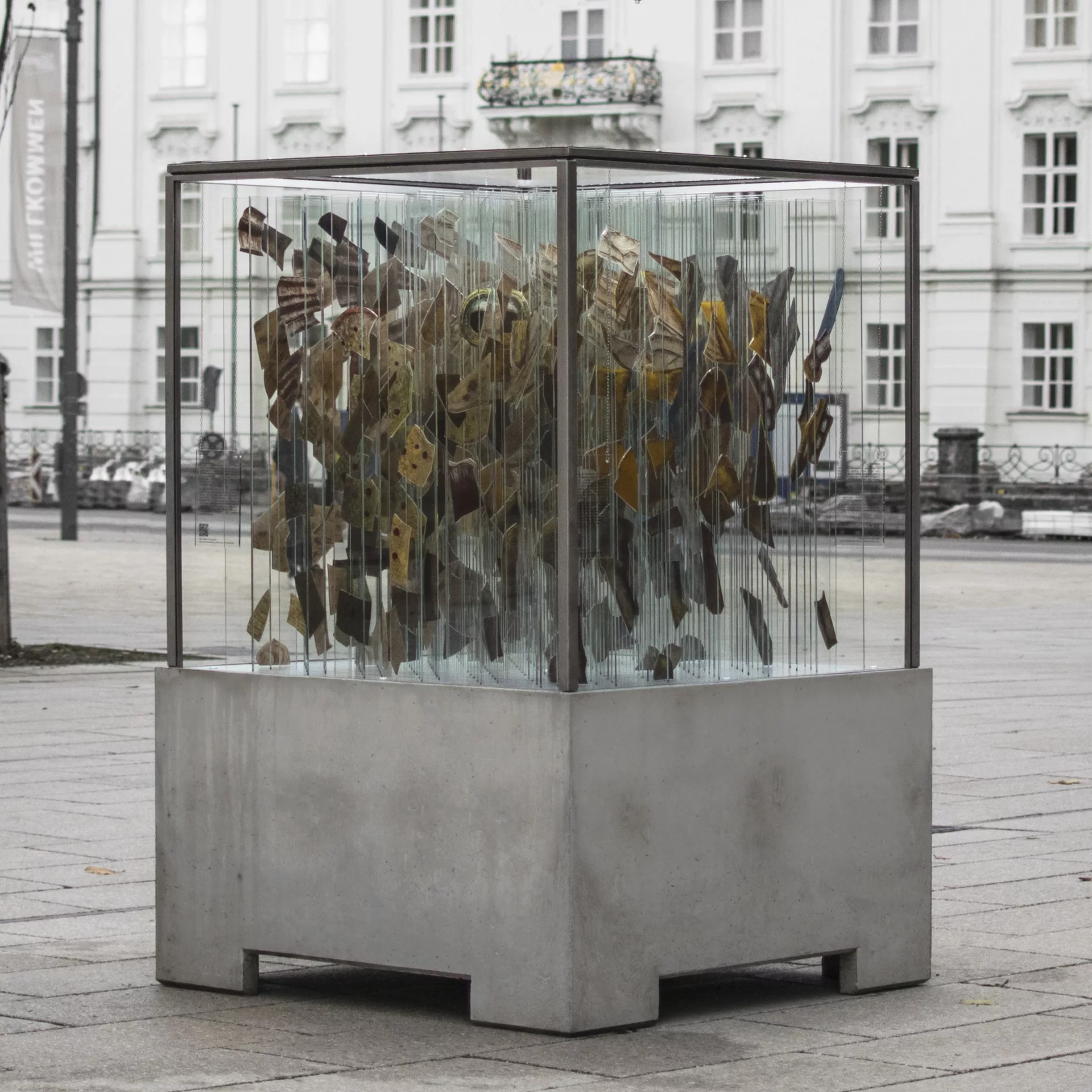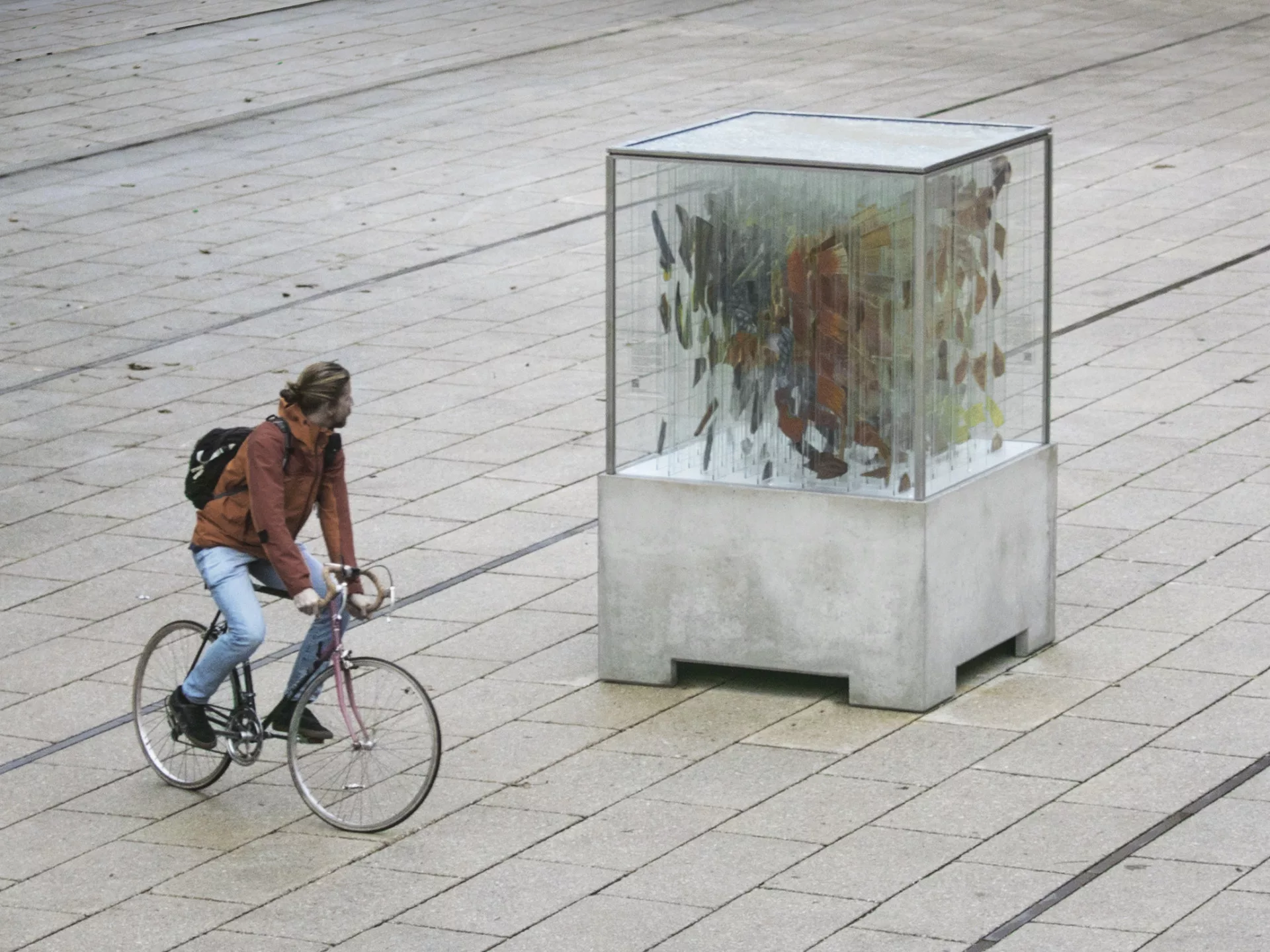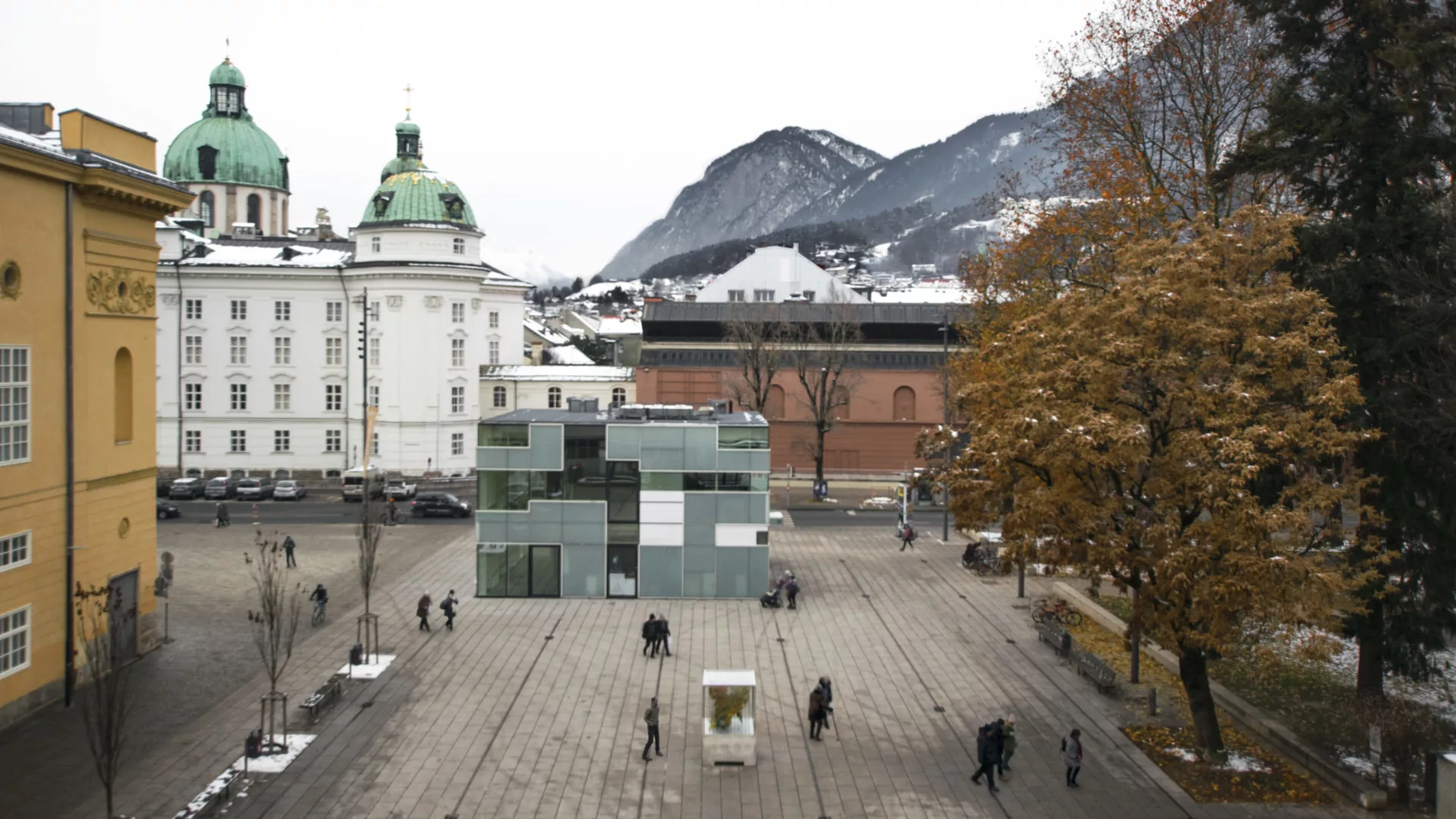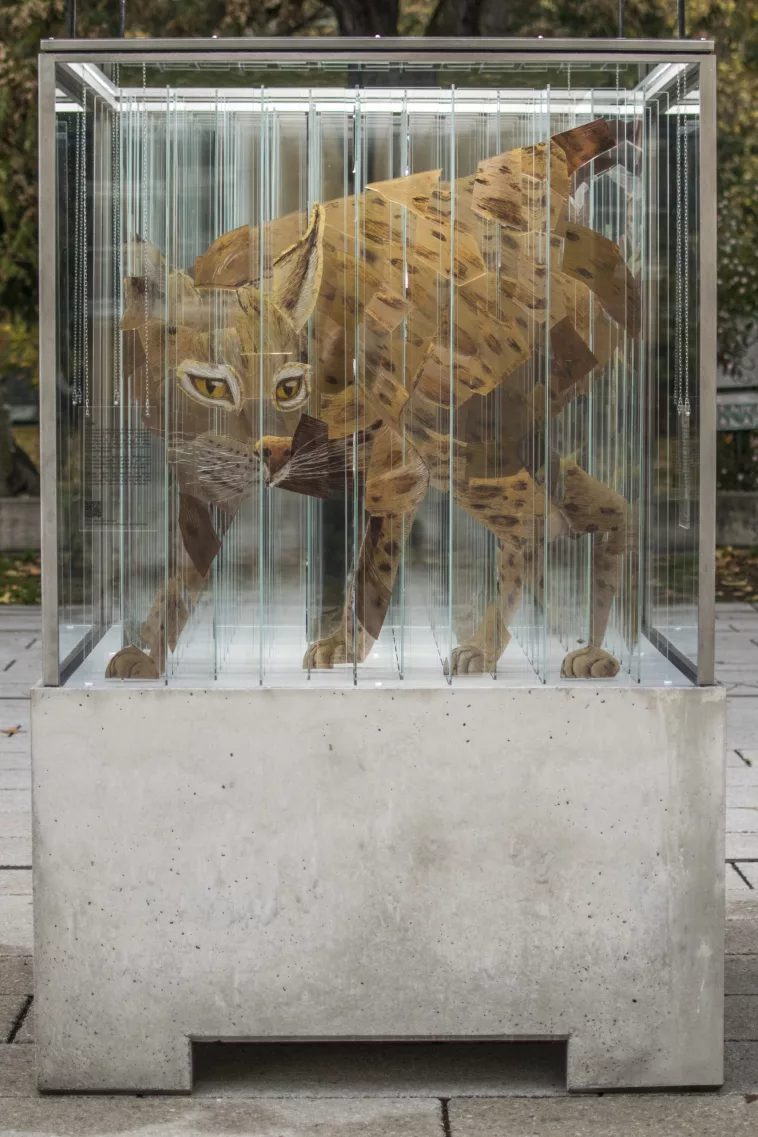In the latest public installation by Austria-based artist Thomas Medicus, viewers are treated to a spectacular showcase of wildlife from the Tyrol region of Austria. With every change in perspective, the installation unveils a new creature that includes a lynx, a bee, a kingfisher, or a river trout. The anamorphic sculptures – a hallmark of Medicus’s work – change with every 90-degree rotation and feature more than 144 strips of glass that interlock seamlessly. As a tribute to the Tyrol region’s endangered and threatened species due to climate change, Medicus’s “Human Animal Binary” is a testament to the artist’s passion for conservation and environmentalism.
The vitrine – a symbol of urbanization encroaching on natural habitats – is made of glass, concrete, and metal and houses the artist’s delicate glass animals. The vessel tackles a pressing issue that affects humanity: the inherent contradiction between human habitat and non-human animal coexistence. “Human Animal Binary” invites viewers to confront this dilemma. With each specimen contained within the cube, the artwork urges onlookers to consider the delicate balance of the surrounding ecosystem, the fragility of existence, and the critical role humans play in destroying and preserving nature.
For more of Medicus’s work, visit his website and Instagram, or watch a short documentary about the installation on Vimeo to gain further insights into the artist’s vision.
